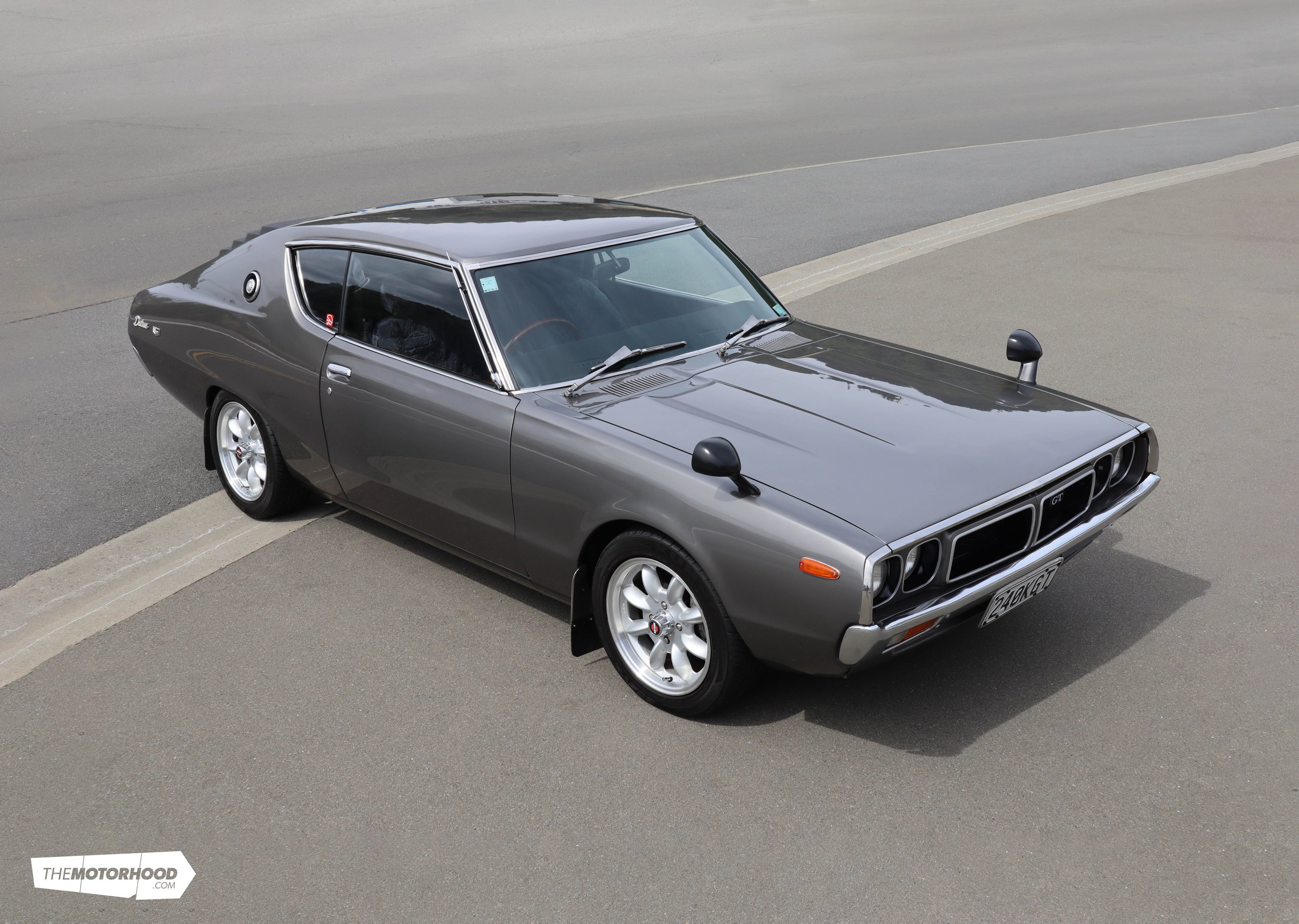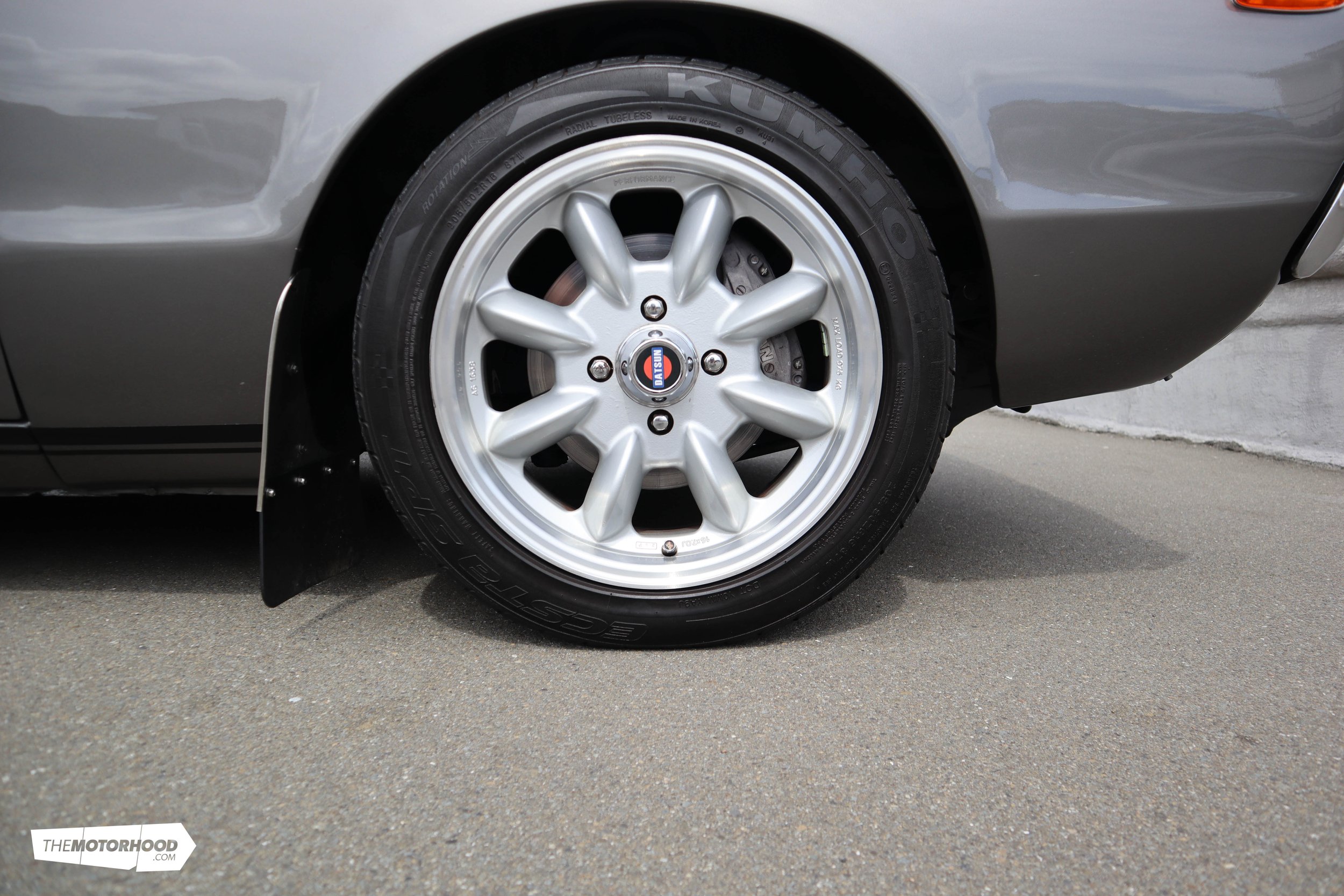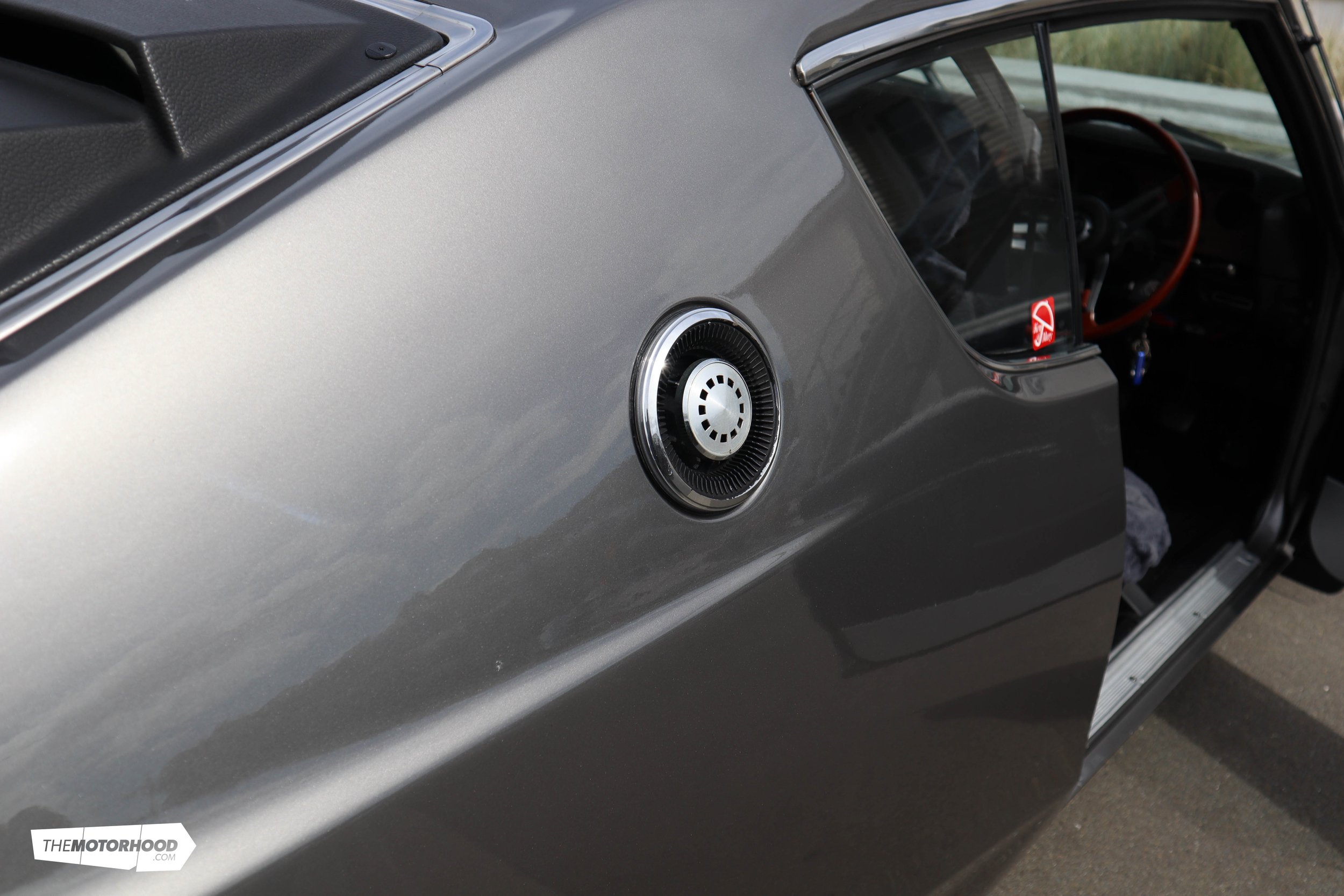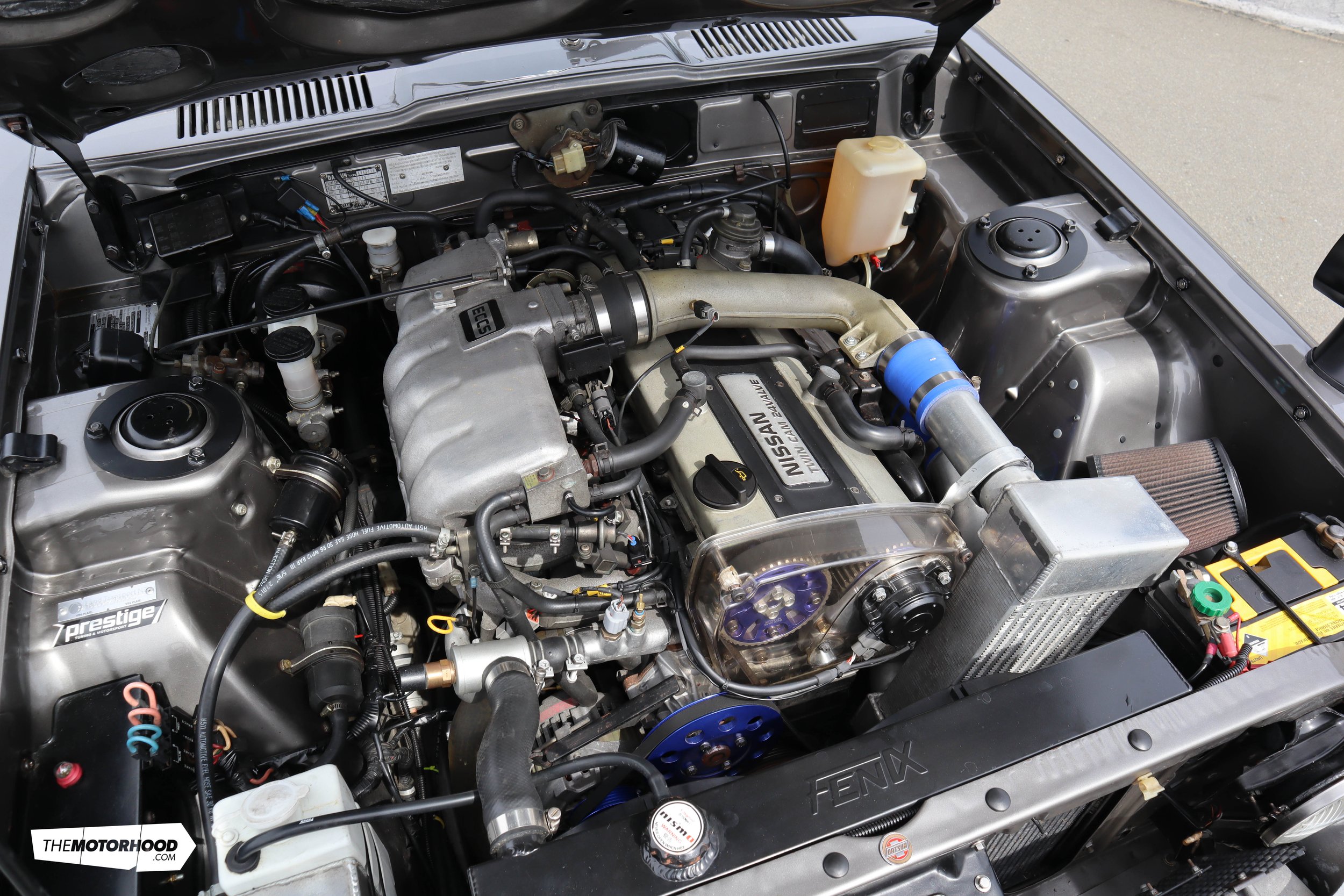Japanese coupés have seen an explosion in value with many formerly common models climbing into the six-figure range, making the rare ones even more precious to some
Words and photography: Vaughan Wilson

Growing up in New Zealand in the 1970s and 1980s I was surrounded by a plethora of British, Australian and Japanese vehicles. Many of these are now worth small fortunes – if you can find them, especially in good condition. Of course, back in the day anything with two doors was raced, rallied or rolled – and often all three – with extractors, mag wheels and a host of other cheap add-ons to either enhance appearances or acceleration.
For most of these cars power was very modest by today’s standards, which was just as well since brakes, suspension, steering and, in my case, an adherence to road rules were below par. To have even survived my teen years was a miracle unto itself, as I am sure it was for many readers of this magazine.
The Datsun 240K in this article, however, was only sold in limited numbers as a coupe in New Zealand due to the lack of import licences of the time. The vehicle sold in large numbers in Japan, Australia and Europe with more than 670,000 4th generation Skyline/240Ks being manufactured. I don’t remember them at all, but the owner of this beauty does. His name is Clark Caldow – but first, a little history.

An Etymological Diversion
The Japanese language is much like Māori in that it is vowel oriented – all syllables must end in a vowel sound, except the letter ‘n’. I am labouring on this to provide some history into how the Datsun got its name. It began in 1914 with a car called the DAT – an acronym of the three founding owners of the motor vehicle company called Kaishinsha Motorcar Works in Tokyo.
Over the years the name changed and eventually Datson was chosen as son of DAT for a new, smaller vehicle in the 1930s. ‘Son of’ is a common way of explaining products in Japan, such as Epson, originally known as Son of the first Electronic Printer in Japan, which was designed for the 1964 Tokyo Olympics. Son was changed to Sun and Datsun was created, not only as a model name but as a brand of vehicles.
Nissan took control of Datsun in 1934. Nissan built trucks, many for the military during World War II. It continued to use the name after the war, principally as a brand name for exporting cars into the USA, which began in 1958. In 1966 Nissan merged with Prince Motor Company of Japan, which owned the Skyline range of cars.

Prince Motor Company was initially an aeroplane manufacturer (like Mitsubishi in Nagasaki) making planes for the Japanese military before and during World War II. It began producing cars in 1952 and in 1957 introduced a new model called the Skyline. The Skyline was designed and engineered predominantly by Shinichiro Sakurai, who continued to be involved with the model until his death in 2011. In Japan the model was available at various times as a two-door and four-door version, convertible, station wagon and even a ute.
The original Skylines looked very similar to Humber 80s of the day. Generations of Skylines have come and gone, and the model is now in its 13th generation. Thanks to the modern models exhibiting Ferrari-type performances, they have become a favourite with boy racers. Hence, finding a nice, straight example is as easy as finding a hen’s molar – they are rare.

Skylines and the Fairlady
In 1972 Datsun released the 4th Generation Skyline known internally as the C110. This model lasted until it was replaced by the 5th Generation in 1977. It came in two-door, four-door and station wagon variants. A range of small engines were offered from the 1600, 1800, 2000 available in Japan and for the export markets a 2.4 litre from the Datsun 240Z along with manual and automatic transmissions.



The 2.4 engine of the 240Z was detuned for the 240K with a lower compression ratio, a different camshaft and a single Hitachi carburettor compared to the twin carbs on the Z.
A GT-R model was offered initially but was soon cancelled due to the oil crisis of 1973 and none were exported officially. Both the GT-R model and the four round rear tail lights were originally created in the 1960s Skylines. These taillights were again used for the C110. The four round tail lights have become stable offerings for the Skyline range of vehicles ever since and the GT-R moniker was resurrected in 1989 in the E32 Skyline.
To market the new C110 in Japan, Nissan marketing devised a campaign featuring two young people called Ken and Mary (KenMeri) enjoying the countryside in Ken’s new Skyline. The ads were very popular and, in a way, emulated the Mustang marketing of a decade earlier with the US baby boomers. The new Skyline sold in huge numbers. KenMeri could also be seen as a play on the term “Meriken” — a slang term for American. This was also popular as the Skyline resembled American muscle cars from the late 1960s and early 1970s as did other Japanese coupés such as the Supra and Mitsubishi GTO.
As with many other Japanese vehicles, the Japanese market prefers English model names. These are often changed to alphanumeric names for export markets. Nissan has used names such as the Cedric and the Gloria to great success in Japan, but these names were altered for export markets. A related example is the incredibly popular Datsun 240Z sold in Japan as the Fairlady Z since 1969.

The Skyline sold well in Australia using the 2.4 litre engine and badged as a 240K. At the time it was around the same price as a Falcon GT or BMW 5 Series at circa AU$5000. The parent Nissan Motor Corporation dropped the name Datsun in favour of Nissan for all vehicles in 1986, but relaunched it in 2013 to represent a cost-effective range of vehicle models. In recent years it has again looked at removing the brand.
Now we come to our feature car. In the early 1970s Clark Caldow was a young sales rep travelling the North Island and doing big miles annually. He loved driving. In 1975 the firm he worked for asked Clark what he wanted for his new car, and Clark chose a brand-new Datsun 240K GT. The two-door car arrived, and Clark was smitten, or in his own words, he was “pole vaulting”.
Clark drove it all over the country, racking up thousands of miles. “It had quite a bit of pep with its SOHC 128 hp (96kW) of power mated to a four-speed manual gearbox,” he says. Weighing in at 1240kg meant the power-to-weight ratio was good for the time and its length at almost 4.5 metres meant it had good street presence.
Japanese Muscle
The lines of the coupe flowed into an unusual upturn in the rear side windows around the C pillar. This was reminiscent of designs coming out of Chrysler/Plymouth from 1971 onwards, such as on the Charger. The long bonnet and short boot was consistent with the muscle craze such as the Mustang. The fuel filler on the left side of the C pillar was replicated with an identical-looking cap on the right side C Pillar that worked as a vent.

Mirrors were attached to the front guards – popular at the time with Japanese cars. Without mirrors on the doors, this allowed the width of the cars to be narrower, which was advantageous for the narrow Japanese roads. There was also a tax on wider vehicles in Japan.
The boot was extra deep from top to bottom because the fuel tank is behind the back seat. However, this same tank means the depth from front to back is modest, so it was more challenging to store large items.
Clark has been a car enthusiast all his life, and decided around nine years ago to look for one of these coupés. By sheer luck he very quickly found a mint example refurbished by an aircraft engineer, but it was in Perth. The engineer had completely renovated the car, including the body and paint and had upgraded the mechanicals to a Nissan RB20DET DOHC used in a number of different models, including the R32 Skyline mated to a five-speed manual putting out around 212bhp (158kW). The car had 16-inch mag wheels – up from the 14-inch factory offering – and a new front disc set-up. The car came with all the original mechanicals and could be restored to its original form if required.

Clark made a deal with the Aussie and soon it was on a ship to Wellington. That was in 2013. Since then, Clark has done a bit of work on getting the ECU upgraded to a Maxx unit and tuned by Chris at Prestige Tuning in Petone. The mirrors had been installed on the doors and Clark had them relocated to the guards for authenticity. The interior is standard and is in very good condition given its age.
The engine sounds amazing – the increased power means it is not only reliable but can keep up easily with modern traffic. “It gets looks wherever it goes,” says Clark. While we were photographing the car, several people came up to admire the pretty coupe. Its gun-metal grey colour matched to a modest level of chrome and brushed mag wheels really sets it off.
Reunited
Interestingly, only a small number of these wonderful coupés were sold as new in New Zealand. Around 20 are left, of which Clark thinks only around eight are on the road. Clark’s original 240K was lavender in colour and was unusual for the period. He tried tracking it down and found that a local collector in Gisborne had sold it to a German enthusiast and it had gone to Europe.
Funnily enough the personalised number plate that a New Zealand owner had adorned it with before it sold overseas was still sitting with the Gisborne collector. He sold it to Clark, and it now sits proudly on his 240K GT featured in this article – a poignant reminder that Clark has at least one small piece of his former love.

This article originally appeared in NZCC issue No. 379


